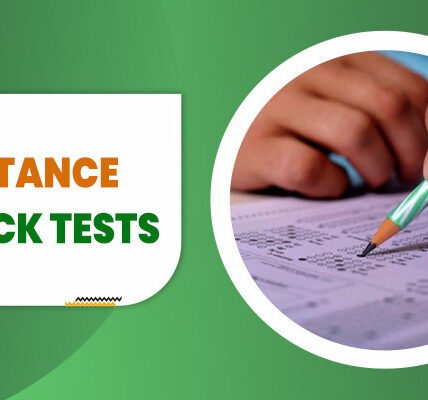
Artificial Intelligence (AI) has become a prominent part of contemporary education, driving transformative changes in classrooms worldwide. Defined as the ability of machines to imitate intelligent human behavior, AI has rapidly evolved, leading to a wide array of tools designed to enhance the learning experience. These advancements enable educators to personalize instruction, automate administrative tasks, and create engaging environments tailored to individual students’ needs. Teacher efficiency with AI
Teacher Efficiency with AI
The integration of AI into education responds to the demands of a digital age, where traditional teaching methods often fall short. For instance, AI-driven software can analyze student performance in real-time, allowing educators to implement timely interventions and adjust their teaching strategies. This personalized approach not only fosters better learning outcomes but also empowers students to control their educational journeys. As a result, student engagement and motivation increase significantly.
Innovations in Classroom Learning
Moreover, AI has produced numerous resources for classroom learning. Intelligent tutoring systems, AI-powered educational games, and chatbots enrich the educational landscape. Consequently, they make knowledge acquisition enjoyable and efficient. Educational institutions increasingly recognize the value of incorporating AI technologies, which harness data to refine curriculum design and deliver tailored educational experiences. Teacher efficiency with AI
Embracing AI in Education
Adapting to AI’s rise in education is crucial for both educators and students. Therefore, educators must embrace these technological advancements and seek professional development opportunities to integrate AI effectively into their teaching practices. A collaborative effort among stakeholders—including educators, policymakers, and technology developers—is essential. This collaboration will maximize AI’s potential while addressing challenges related to accessibility and equity in education.
Personalized Learning Experiences
AI is revolutionizing education by enabling personalized learning experiences. AI-driven learning platforms tailor educational content based on an analysis of student performance and preferences. For example, these platforms use data analytics to identify learning patterns and areas where students need additional support, providing customized resources that enhance the learning experience.
Adapting to Individual Learning Paces
A notable benefit of AI is its ability to adapt to each student’s pace. Platforms like DreamBox Learning and Knewton deploy algorithms to assess student engagement and understanding in real-time. If a student struggles with a particular concept, the AI offers targeted exercises to address specific challenges. Thus, this approach fosters effective learning journeys, keeping students engaged and empowering them to take charge of their education.
Enhancing Collaboration Between Students and Educators
AI also enhances collaboration between students and educators. Tools like IBM’s Watson Education provide insights into student performance, enabling educators to identify trends and intervene when necessary. For instance, teachers can use data to develop small group sessions focused on specific subjects or skills, creating a supportive learning environment. As a result, successful implementations of personalized learning strategies are visible in various educational institutions. Schools using platforms like Summit Learning report increased student engagement and improved academic outcomes. Teacher efficiency with AI
The Evolution of AI-Powered Tutoring Systems
AI has ushered in a new era in educational technology with the development of AI-powered tutoring systems. These platforms provide personalized support tailored to individual student needs. In addition, sophisticated algorithms analyze students’ learning patterns, strengths, and weaknesses, facilitating optimal learning outcomes.
Advantages of Adaptability in AI Tutoring Systems
One primary advantage of AI-powered tutoring systems is their ability to adapt to each student’s unique pace. Unlike traditional classrooms, where fixed curricula may not address varying comprehension levels, these systems continuously monitor progress and modify content delivery accordingly. For example, if a student excels in a specific area, the system presents more challenging material while providing additional assistance in subjects where the student struggles. This adaptability makes learning more effective, ensuring students remain engaged and motivated.
Reinforcing Classroom Concepts
AI tutoring systems also reinforce concepts introduced in the classroom. Through interactive exercises, quizzes, and instant feedback, these platforms allow students to practice and solidify their understanding of complex topics. Case studies demonstrate the efficacy of AI-powered tutoring systems. For instance, a notable study in a mathematics curriculum revealed significant improvement in student test scores when supplemented with AI tutoring. Students using the platform exhibited increased confidence and a deeper understanding of mathematical concepts compared to peers who only received conventional instruction. Teacher efficiency with AI
Streamlining Teacher Responsibilities
As educational institutions embrace technology, AI-powered tutoring systems will likely continue transforming classroom learning. Ultimately, they provide students with the individualized support necessary to thrive academically. Moreover, AI integration in classrooms has transformed how teachers manage their responsibilities. One impactful change is automating administrative tasks, allowing educators to devote more time to instruction and student engagement.
Automating Administrative Tasks
Various AI-powered tools streamline functions such as grading, attendance tracking, and lesson planning. For instance, grading software uses advanced algorithms to assess student submissions quickly, providing objective feedback on assignments. This accelerates the grading process and reduces the potential for human error. As a result, teachers can focus on providing personalized guidance rather than being bogged down by paperwork. Studies suggest that AI grading tools can decrease assessment time by up to 50%, freeing educators to improve their instructional methods and foster deeper student interactions.
Simplifying Attendance Tracking
AI-driven attendance tracking systems simplify monitoring through automated check-ins, ensuring teachers can promptly acknowledge student presence without manual documentation. Moreover, these systems alert educators about attendance patterns and flag potential issues requiring intervention, contributing to improved student support. Additionally, AI applications in lesson planning streamline curriculum design by offering data-driven insights into student performance, helping teachers tailor materials to meet diverse learning needs effectively.
The Impact on Teacher Job Satisfaction
Testimonials from educators indicate a marked increase in job satisfaction attributed to enhanced efficiency. Many teachers report that reduced administrative burdens allow more time for creative lesson development and individualized student engagement. Consequently, AI incorporation in education enhances operational efficiency and enriches the overall teaching experience, leading to an invigorated learning environment for both teachers and students.
Supporting Diverse Learning Needs
AI plays a pivotal role in addressing the diverse learning needs present in contemporary classrooms. This transformation is significant for students with disabilities and learning challenges who often require tailored instructional approaches to thrive academically. In this context, AI technologies offer innovative solutions catering to these varied educational requirements. Teacher efficiency with AI
Personalized Learning Platforms
One notable application of AI is in developing personalized learning platforms. These platforms analyze student performance data and adapt educational content. For instance, AI-powered tools can track how students engage with materials, identifying areas where they may struggle. Such insights allow educators to modify their teaching strategies, ensuring all students, regardless of their learning capabilities, receive necessary support.
Creating Accessible Learning Environments
AI also creates accessible learning environments through assistive technologies. Tools like speech recognition software, text-to-speech applications, and adaptive learning devices provide essential resources for students with disabilities. For example, visually impaired students can benefit from audiobooks and braille-enabled tablets, while those with learning difficulties may use applications that simplify text and provide multimedia resources for better understanding.
Fostering Inclusive Classrooms
The positive impact of AI extends beyond individual accommodations, fostering inclusive classrooms where equality in learning opportunities is prioritized. Moreover, AI systems ease administrative burdens on educators, allowing them to focus on instructional quality and student engagement. With advancements in AI, teachers can dedicate more time to providing personalized attention to each student, enhancing their educational experience.
The Role of AI in Collaborative Learning
AI has emerged as a transformative force in education, particularly in fostering collaborative learning among students. By integrating AI-enabled tools, educational environments can encourage deeper engagement through group projects and peer learning activities. Furthermore, AI facilitates connections among students by identifying common interests and complementary skills, enhancing collaboration.
Intelligent Communication Platforms
AI supports collaboration through intelligent communication platforms. These tools allow students to engage in discussions and share resources seamlessly, regardless of geographical barriers. For instance, platforms that utilize AI can analyze group dynamics and suggest optimal team compositions for projects based on individual strengths and weaknesses. This sets the stage for productive teamwork, enabling students to tackle complex problems collectively.
Monitoring Student Interactions
AI-driven analytics monitor student interactions and provide insights into participation levels and collaboration patterns. For example, AI systems can track contributions to discussions, aiding educators in providing targeted feedback to improve group dynamics. By using data to refine collaborative processes, educators foster a more inclusive environment where all voices are heard.
Real-World Applications
Real-world applications illustrate these concepts effectively. One example is a university program integrating AI tools to facilitate collaborative research projects, where students use AI to curate relevant literature and collaborate on data analysis, enhancing their collective learning experience. Another example is AI use in virtual learning environments, where students from diverse backgrounds come together to solve real-world problems, benefiting from varied perspectives while working collaboratively.
The Importance of Data-Driven Decision Making
In recent years, AI has emerged as a pivotal force in transforming classroom learning through data-driven decision-making. AI systems collect and analyze vast amounts of data related to student performance, engagement, and learning behaviors. This data collection includes assessments, attendance records, and interactions with educational resources, providing educators with a comprehensive view of individual and group learning patterns.
Tailoring Teaching Strategies
Advanced analytics allow educators to gain deeper insights into how students grasp concepts, enabling them to tailor their teaching strategies to meet diverse learning needs. For instance, AI can identify students struggling with specific topics and suggest targeted interventions, fostering a more personalized learning experience. Moreover, data analytics reveal trends over time, enabling institutions to adjust curricula and instructional methods based on empirical evidence.
Ethical Considerations in AI
However, integrating AI in education raises ethical concerns, particularly regarding data privacy. Given the sensitive nature of student information, strict adherence to data protection regulations is necessary. Educators and institutions must ensure that data usage aligns with ethical standards and prioritizes students’ rights. Transparency about data handling practices is crucial, allowing stakeholders, including parents and students, to understand how their information is collected, analyzed, and utilized. Teacher efficiency with AI
4o mini
Continue generating

